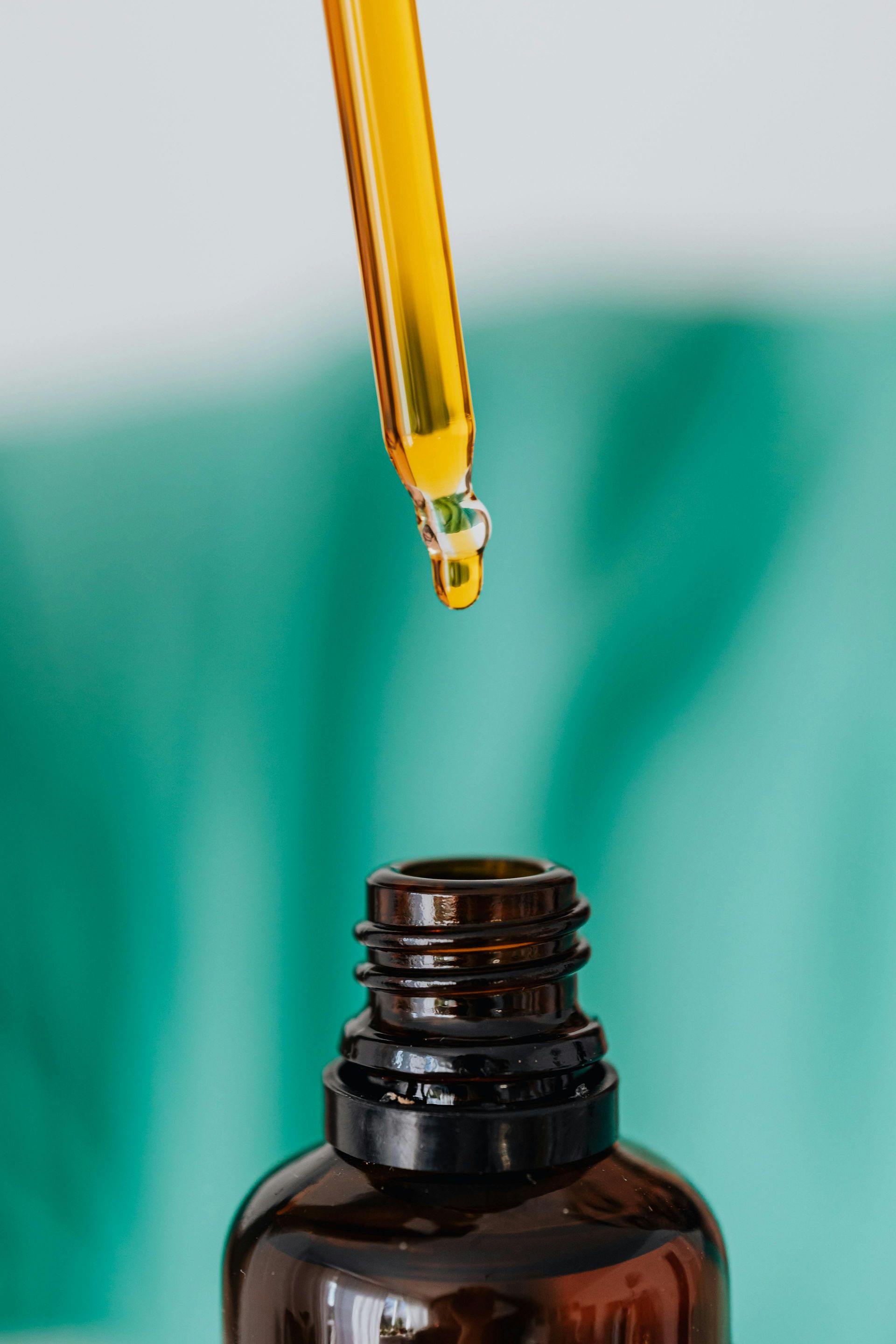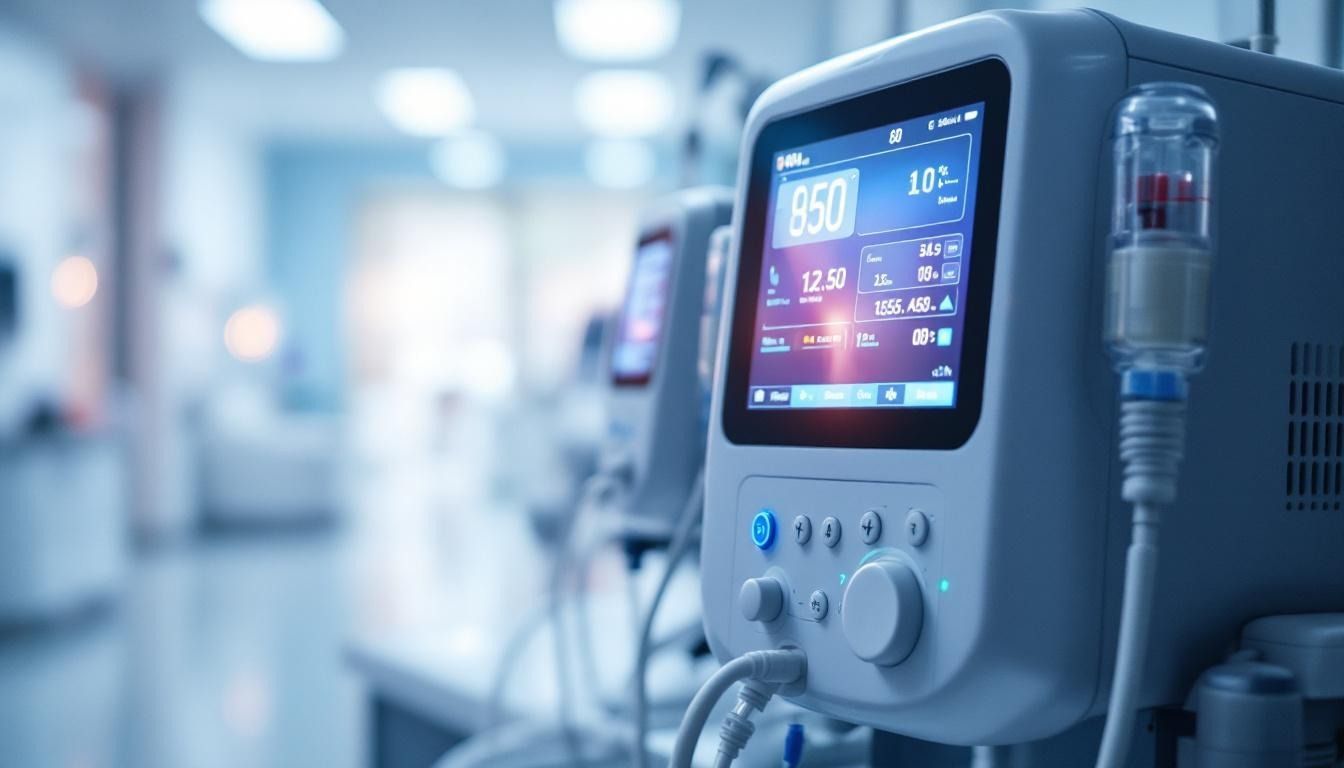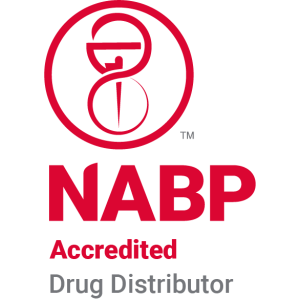How to Balance Energy Needs in Patients on Long-Term TPN
Introduction to Energy Management in TPN
Effective management of energy needs in patients on long-term Total Parenteral Nutrition (TPN) is crucial for maintaining nutritional balance, avoiding complications, and improving clinical outcomes. This article explores guidelines, best practices, and physiological considerations essential for clinicians to tailor TPN therapy precisely to individual patient needs, focusing on weighing risks of overfeeding and underfeeding, and utilizing appropriate monitoring strategies.
Understanding Total Parenteral Nutrition (TPN)
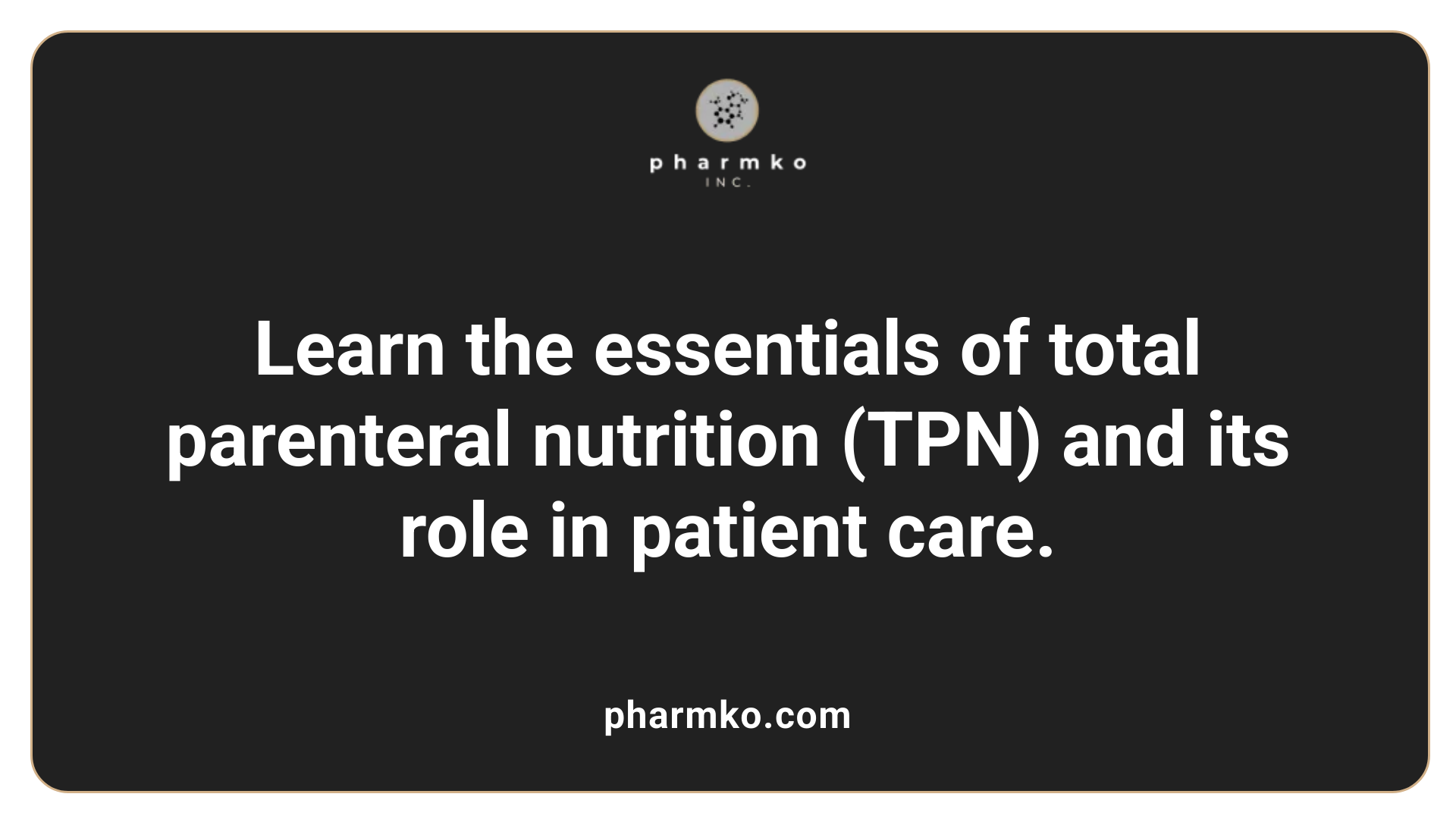
What is total parenteral nutrition (TPN)?
Total parenteral nutrition (TPN) is a method of delivering all essential nutrients directly into the bloodstream through a central vein, bypassing the gastrointestinal (GI) tract. It is primarily used for patients who cannot process or absorb food normally due to various medical conditions.
Patients with bowel obstructions, short bowel syndrome, severe trauma, or after major surgeries or chemotherapy, often cannot tolerate enteral feeding. In such cases, TPN provides a complete nutritional solution necessary for survival, healing, and recovery.
A typical TPN formula includes dextrose (a form of carbohydrate), amino acids (proteins), lipid emulsions (fats), vitamins, minerals, and electrolytes. Each component is carefully tailored to match the patient's specific needs, which are determined through laboratory tests and clinical assessments.
TPN is usually administered via a central venous catheter, such as a PICC line or tunneled catheter, because of its high osmolarity. The infusion generally lasts 10-12 hours and can be administered in a hospital setting or at home with proper training.
Monitoring is crucial during TPN therapy to detect and manage potential complications like infections (especially catheter-related), metabolic disturbances (e.g., hyperglycemia), and liver issues. Proper oversight by an interprofessional team involving clinicians, dietitians, pharmacists, and nurses ensures safe and effective nutritional support.
Individualized Dosing and Macronutrient Composition in TPN
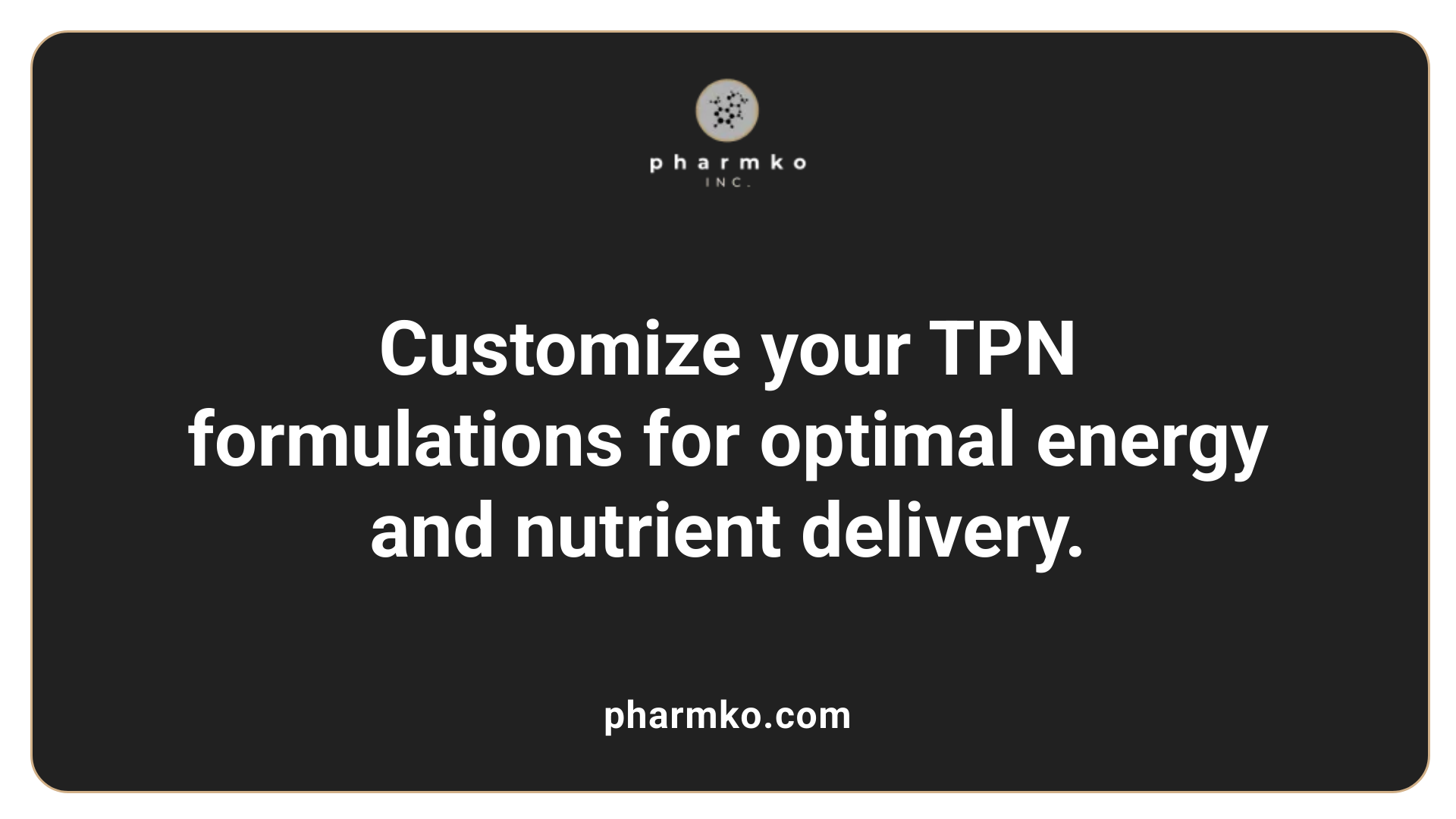
How is TPN dosing determined for adult patients?
Total parenteral nutrition (TPN) dosing in adults is carefully tailored to each patient's unique needs, considering their metabolic demands, clinical situation, and nutritional status. Typically, the prescribed volume ranges from 2 to 3 liters daily, infused steadily over 24 hours via a central venous catheter, with the infusion rate usually between 83 and 125 mL per hour.
The macronutrient makeup includes dextrose, amino acids, and lipids, adjusted to meet energy and protein requirements. Adult patients generally need around 0.8 to 1 gram of protein per kilogram of body weight daily; however, critically ill or catabolic patients may require higher doses, up to 1.5 g/kg/day.
Dextrose concentration varies—common formulations include 40%, 50%, or 70% solutions—aiming to provide enough carbohydrates without exceeding infusion rates that cause hyperglycemia. To prevent elevated blood glucose levels, the infusion rate of glucose (glucose infusion rate, GIR) should not surpass 5 to 7 mg/kg/min.
Electrolytes, vitamins, minerals, and trace elements are added based on current serum levels and ongoing monitoring. Serum electrolytes, renal function, and liver tests are checked frequently to allow timely adjustments to the TPN formulation.
What are the common complications associated with TPN?
While TPN is lifesaving, it carries potential risks. The most serious is catheter-related bloodstream infections, which can lead to bloodstream infections (CLABSIs). These require prompt management and prevention strategies.
Metabolic issues are also common, including hyperglycemia, hypoglycemia, electrolyte imbalances, and hypertriglyceridemia. Close blood sugar monitoring and electrolyte assessments are vital to manage these risks.
Long-term TPN can result in liver complications such as fatty liver, cholestasis, fibrosis, or cirrhosis, especially if lipid infusion is excessive or if overfeeding occurs. Monitoring liver function tests regularly helps detect early signs.
Electrolyte disturbances, such as sodium, potassium, magnesium, and phosphorus imbalances, necessitate routine labs to guide replacement therapy.
Venous access problems like thrombosis, occlusion, and vascular injury are risks, emphasizing the importance of proper catheter care and placement.
Overall, vigilant monitoring and individualized adjustments are essential to maximize benefits and minimize adverse effects during TPN therapy.
Monitoring and Assessment of Nutritional and Metabolic Status

How do clinicians monitor the nutritional status and energy expenditure of long-term TPN patients?
To effectively monitor patients on long-term total parenteral nutrition (TPN), clinicians rely on a combination of clinical assessments and laboratory tests. Regular measurements of body weight, body mass index (BMI), and physical exam parameters such as skin fold thickness and mid-arm circumference help evaluate nutritional status.
Laboratory parameters are crucial for detecting deficiencies or excesses. Key tests include serum electrolytes, liver function tests, renal function, serum proteins like albumin and prealbumin, and blood glucose levels. These assessments are typically performed weekly initially and then less frequently once stability is maintained.
Accurately measuring energy expenditure is challenging but essential. Indirect calorimetry stands out as the gold standard, providing precise measurements of resting energy expenditure (REE). To ensure consistent results, the test is usually conducted in the morning after an overnight fast. Since total energy expenditure (TEE) often exceeds REE in TPN patients—due to activity level, infection, or illness—some guidelines suggest estimating TEE as approximately 1.4 times the measured REE, typically around 30-40 kcal/kg/day.
The doubly labeled water method provides the most accurate TEE measurement but is primarily reserved for research due to its cost and complexity. These data enable clinicians to customize nutritional prescriptions, balancing adequate energy provision while avoiding overfeeding that risks fatty liver, hyperglycemia, and electrolyte disturbances.
What are the physiological considerations affecting energy needs in long-term TPN?
Understanding the metabolic state of each patient is vital when tailoring TPN. During long-term therapy, factors like organ function, illness severity, and catabolic state influence energy requirements. In critically ill or severely malnourished patients, energy needs tend to be higher, often requiring individualized adjustments.
Overfeeding can lead to complications such as hepatic steatosis, electrolyte imbalances, and hyperglycemia. Conversely, underfeeding can impair wound healing, immune response, and overall recovery. As such, close monitoring of laboratory values such as blood glucose, liver enzymes, and electrolytes guides nutrient adjustments.
Certain populations are more vulnerable to metabolic disturbances. For example, patients with liver impairment may require lipid reduction or cyclical infusion to prevent cholestasis. Diabetic patients need careful glucose control, and renal impairment necessitates modified electrolyte and protein provisions.
In addition to vigilant laboratory monitoring, aseptic management of catheter sites, gradual adjustments of nutrient infusion rates, and assessment of clinical parameters like signs of refeeding syndrome are prioritized. This comprehensive approach ensures metabolic stability, minimizes complications, and optimizes patient outcomes during long-term TPN therapy.
Calculating Energy, Macronutrients, and Micronutrients in TPN
How can clinicians prevent and manage complications related to TPN?
Clinicians can minimize TPN complications through meticulous line care, aseptic techniques, and vigilant patient monitoring. Ensuring proper line insertion, such as using ultrasound guidance, reduces mechanical issues like pneumothorax and thrombosis. Regular assessments of serum electrolytes, blood glucose, liver function tests, and lipid levels help identify and correct metabolic disturbances early, preventing problems like refeeding syndrome, hyperglycemia, and liver dysfunction.
A multidisciplinary team approach involving doctors, pharmacists, dietitians, and nurses enhances personalized care. Proper patient assessment, including verifying central venous line position with imaging and limiting line manipulations, helps prevent infections and mechanical complications. Education on line maintenance, prompt detection of abnormalities, and intervention strategies are vital to ensure safe TPN therapy.
What are the considerations for adjusting TPN formulations in long-term therapy?
Adjustments to long-term TPN are based on ongoing evaluation of the patient's clinical status and lab results. Initial formulations are tailored to baseline nutritional needs, organ function, and underlying conditions. As the patient progresses, modifications in the ratios of macronutrients—such as fats, dextrose, and amino acids—are necessary to avoid overfeeding, which can cause fatty liver or electrolyte imbalances, or underfeeding that hampers recovery.
Monitoring trends in electrolytes, liver enzymes, and nutritional markers helps clinicians fine-tune the mixture, balancing energy intake with patient tolerance. For instance, reducing dextrose if hyperglycemia develops, or adjusting lipid levels to prevent hepatic steatosis. Regular team collaboration ensures that TPN remains safe, effective, and adaptable to the patient's evolving needs, ultimately supporting recovery and maintaining metabolic stability.
Guidelines and Best Practices for Safe TPN Administration
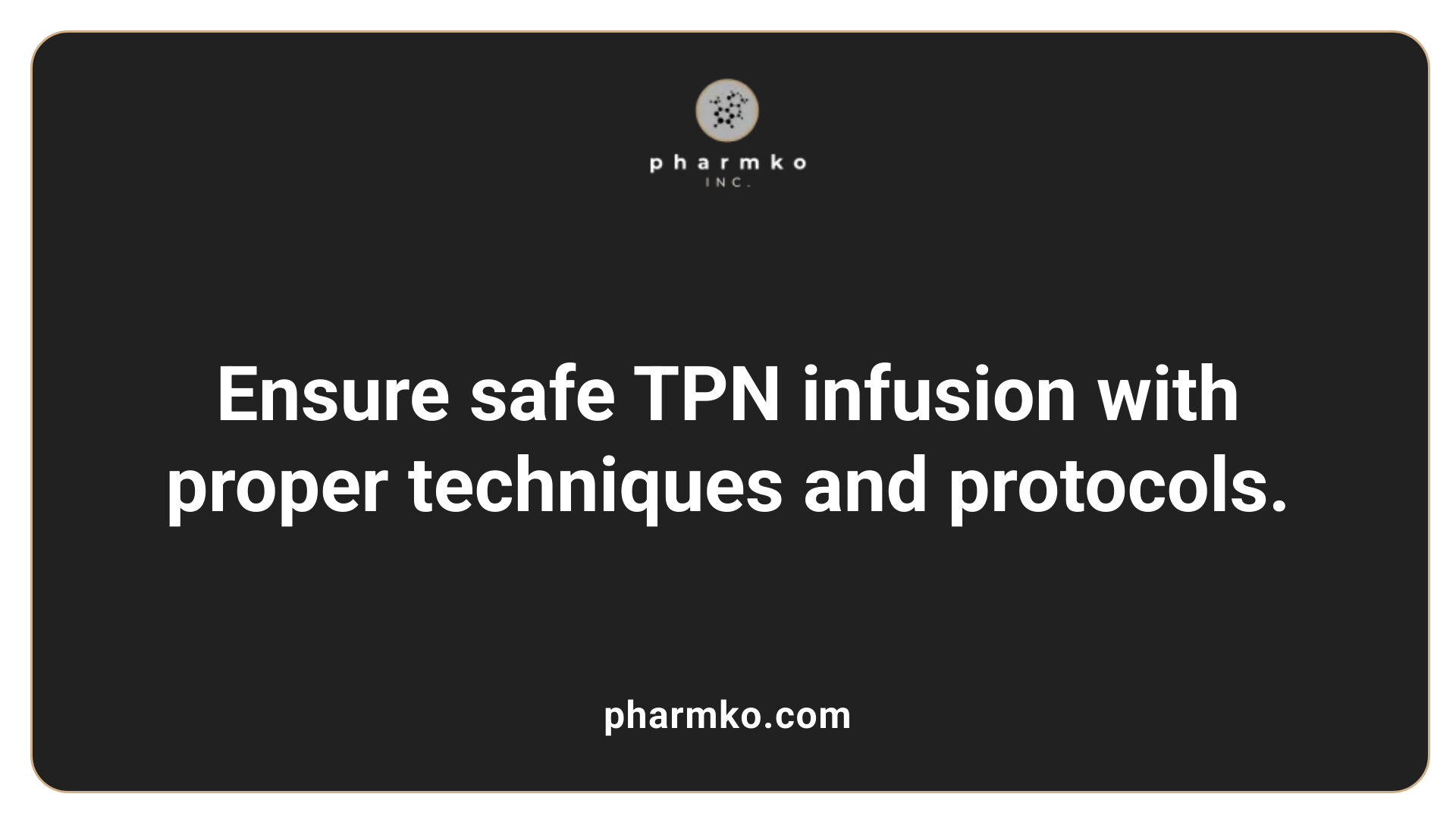
What are the guidelines for administering TPN safely?
Administering Total Parenteral Nutrition (TPN) requires meticulous adherence to safety protocols to prevent complications and ensure effective nutrition delivery. Central to this is strict aseptic technique during both preparation and infusion. Healthcare staff should perform proper hand hygiene, wear sterile gloves, and use sterilized equipment when handling TPN solutions.
Prior to administration, the TPN bag should be inspected thoroughly for clarity, correct labeling, and expiration date. The infusion should only commence after verifying the prescribed composition, dose, and infusion rate. TPN is typically administered through a central venous catheter, such as a PICC line, tunneled catheter, or implantable port, due to its high osmolarity.
Connecting the TPN infusion line requires sterile technique: the tubing must be primed carefully, connections secured tightly, and the line flushed both before and after infusion. This practice minimizes the risk of contaminant entry and catheter-related infections.
Monitoring during TPN infusion is critical, including regular assessment of blood glucose levels, serum electrolytes, and signs of infection at the catheter site. Clinical observations should include checking for fever, redness, swelling, or pain, which could suggest an infection.
Adherence to prescribed regimens is vital; doses and infusion times must match the healthcare provider’s orders. Staff and patients should also be educated about potential adverse signs such as hyperglycemia, electrolyte disturbances, or catheter problems, and instructed to seek immediate medical attention if these occur.
In summary, safe TPN practice hinges on aseptic handling, vigilant monitoring, proper staff training, and patient education, all aimed at reducing risks and promoting optimal nutritional outcomes.
Long-Term TPN Management Strategies and Complication Prevention

What are best practices for tailoring TPN formulations to meet individual patient needs?
Creating an effective TPN formulation requires a personalized approach. Clinicians begin by thoroughly assessing the patient's caloric and nutritional requirements, which depend on factors such as age, weight, metabolic rate, and disease state. Laboratory tests, including electrolytes, liver and renal function, and nutritional markers, guide adjustments over time.
The macronutrient composition—dextrose, amino acids, and lipids—is customized to avoid overfeeding and minimize metabolic complications. For example, excess carbohydrates can lead to hyperglycemia, so dextrose levels are carefully regulated. Lipid emulsions are selected based on the patient's condition, with attention to avoiding lipid overload that may cause cholestasis.
Micronutrient supplementation, including electrolytes, vitamins, and trace elements, is tailored based on ongoing lab results. Compatibility, osmolarity, and stability considerations influence the choice of specific additives. Regular monitoring of blood glucose, electrolytes, liver function, and nutritional status enables timely modifications to the TPN plan.
An interprofessional team—including dietitians, pharmacists, and physicians—collaborates to develop and adjust the individualized TPN formulation, ensuring safety, efficacy, and responsiveness to the patient's changing clinical condition.
Key Takeaways for Clinical Practice
Balancing energy needs in long-term TPN patients hinges on precise assessment, individualized formulation, meticulous monitoring, and an interdisciplinary approach. Employing indirect calorimetry, optimizing macronutrient ratios, and updating TPN protocols based on patients' evolving clinical status are fundamental strategies. Adhering to safety guidelines and understanding the physiological intricacies of energy metabolism support optimal outcomes while mitigating potential complications. Regular reassessment and patient-centered adjustments ensure that nutritional support is both effective and safe, ultimately enhancing patient recovery and quality of life.
References
- Total Parenteral Nutrition - StatPearls - NCBI Bookshelf
- [PDF] The Hitchhiker's Guide to Parenteral Nutrition Management for Adult ...
- Guidelines on Parenteral Nutrition, Chapter 3 - PMC
- The ultimate nutrition support guide for dietitians
- A Complete Guide to TPN Therapy - AmeriPharma® Specialty Care
- Parenteral Nutrition Monitoring - BAPEN
- Total energy expenditure during total parenteral nutrition
- Nutrition Support Therapy - AAFP
- Long-term parenteral nutrition - ScienceDirect
- What Is Hyperalimentation? - AmeriPharma® Specialty Care



